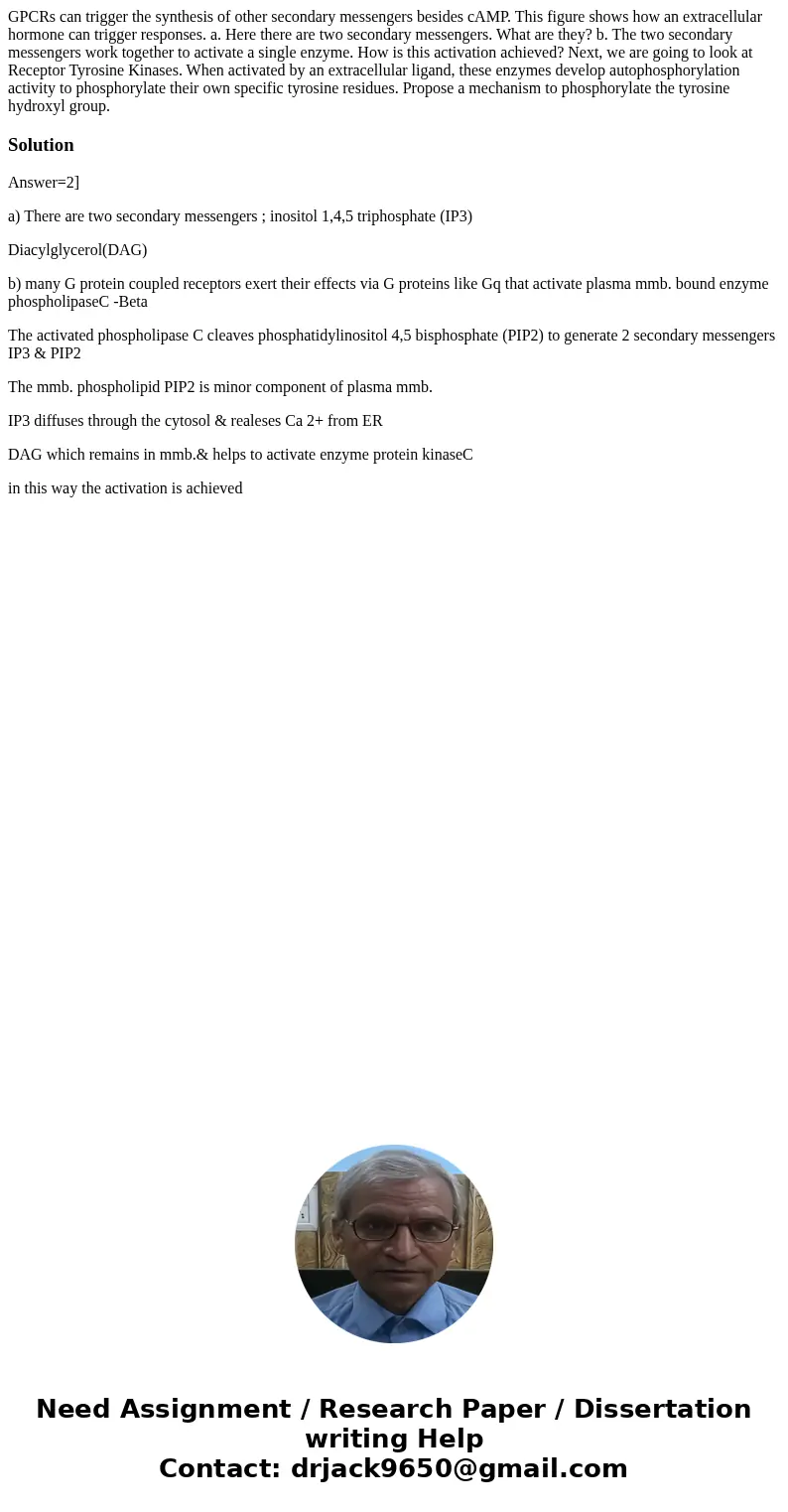GPCRs can trigger the synthesis of other secondary messenger
GPCRs can trigger the synthesis of other secondary messengers besides cAMP. This figure shows how an extracellular hormone can trigger responses. a. Here there are two secondary messengers. What are they? b. The two secondary messengers work together to activate a single enzyme. How is this activation achieved? Next, we are going to look at Receptor Tyrosine Kinases. When activated by an extracellular ligand, these enzymes develop autophosphorylation activity to phosphorylate their own specific tyrosine residues. Propose a mechanism to phosphorylate the tyrosine hydroxyl group. 
Solution
Answer=2]
a) There are two secondary messengers ; inositol 1,4,5 triphosphate (IP3)
Diacylglycerol(DAG)
b) many G protein coupled receptors exert their effects via G proteins like Gq that activate plasma mmb. bound enzyme phospholipaseC -Beta
The activated phospholipase C cleaves phosphatidylinositol 4,5 bisphosphate (PIP2) to generate 2 secondary messengers IP3 & PIP2
The mmb. phospholipid PIP2 is minor component of plasma mmb.
IP3 diffuses through the cytosol & realeses Ca 2+ from ER
DAG which remains in mmb.& helps to activate enzyme protein kinaseC
in this way the activation is achieved

 Homework Sourse
Homework Sourse